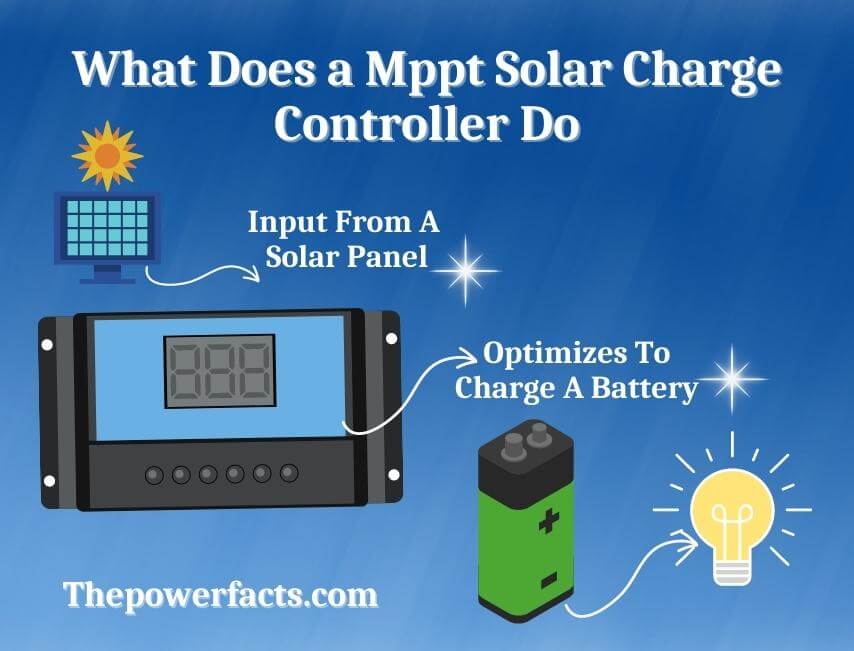An MPPT (Maximum Power Point Tracking) solar charge controller optimizes the power that solar panels can provide by tracking the highest voltage and current values in real time. This advanced technology increases the efficiency of solar systems.
The working principle of an MPPT controller is key to its success. It relies on real-time tracking of the highest power output of solar panels. This functionality distinguishes it from other types of solar charge controllers, such as PWM (Pulse Width Modulation). While both MPPT and PWM regulate the voltage and current coming from the solar panels, MPPT controllers are more efficient because they continuously optimize the power input.

With the advantage of boosting system efficiency, MPPT controllers are considered a superior option. These controllers are suitable for a variety of systems, regardless of the voltage. Hence, an MPPT solar charge controller 12v can function as efficiently as one with a different voltage rating.
For users, many resources, including an MPPT solar charge controller manual, are available for reference. This manual provides guidance on how to use an MPPT solar charge controller properly to maximize its benefits.
Modern MPPT controllers are also adaptable to different types of batteries. For instance, an MPPT solar charge controller for lithium batteries is available in the market, offering high compatibility with the increasing use of lithium batteries in solar power systems.
Overall, the versatility and high efficiency of MPPT controllers make them a vital component of any solar power setup, significantly enhancing the potential of the renewable energy sector.
Core Functions of an MPPT Solar Charge Controller
At the heart of it, the MPPT solar charge controller operates as a sophisticated DC-to-DC converter for solar power systems. This device plays a crucial role in managing the voltage generated by the solar panels, converting and modulating it to a level most suitable for charging the associated battery.
Maximum Power Point Tracking: The Underlying Mechanism
Decoding MPPT
The acronym MPPT stands for Maximum Power Point Tracking, which signifies the innovative technology that these controllers employ. The central task of the controller is to regulate the incoming voltage and current to the maximum power point, optimizing efficiency.
Real-Time Tracking
The highlight of the MPPT technology is its capacity to continually monitor and adjust the power input. This perpetual tracking and optimization of the power point allow MPPT controllers to outshine their counterparts, such as PWM (Pulse Width Modulation) controllers.
Utilizing MPPT Controllers Effectively
The correct use of MPPT controllers can lead to significant benefits. Various resources, including the MPPT solar charge controller manual, offer a wealth of information to users. The manual serves as a comprehensive guide, providing a systematic process to install and operate the controller efficiently.
Flexibility of MPPT Controllers in Terms of Voltage
MPPT controllers showcase impressive flexibility with voltage variations. This means, an MPPT solar charge controller 12v can function with similar efficiency as those designed for different voltage levels.
The Superiority of MPPT over PWM
Comparing MPPT and PWM controllers underlines the superior efficiency of MPPT controllers. While both types serve to regulate the voltage and current from solar panels, MPPT controllers’ capacity to continually adapt to the highest power output offers a distinct advantage.
Noteworthy Advantages of MPPT Controllers
The primary advantage of MPPT controllers is their potential to enhance the efficiency of solar power systems. By perpetually targeting the maximum power output, these controllers ensure maximal use of the solar panels’ generated energy.
Versatility with Diverse Battery Types
Adding to their impressive feature set, MPPT controllers can accommodate various battery types. Notably, there are MPPT solar charge controllers specifically designed for lithium batteries, in response to the rising trend of lithium battery usage in solar power systems. This adaptability further enhances the appeal of MPPT controllers in the renewable energy field.
FAQs
What Are the Settings for an MPPT Charge Controller?
The settings of an MPPT charge controller largely depend on the type of battery and solar array in use. These settings typically involve adjusting parameters such as bulk charge voltage, float charge voltage, and absorption time. Specific instructions can be found in the controller’s user manual.
Is There a Manual for the Epever 40A MPPT Solar Charge Controller?
Yes, there is. The Epever 40A MPPT solar charge controller comes with a detailed manual that provides step-by-step instructions on installation, setup, and troubleshooting. It’s crucial to follow this manual to get the most out of your MPPT controller.
What Does MPPT Stand For?
MPPT stands for Maximum Power Point Tracking. This term signifies a technology used in solar charge controllers to maximize the power conversion from the solar panels to the battery system. It adjusts in real time to ensure optimal power output.
Why is MPPT Efficiency Important in Solar Power Systems?
MPPT efficiency matters as it determines how much power from your solar panels can be converted into usable energy for your battery system. Higher efficiency means more power and better utilization of your solar array.
What Is the Difference Between an MPPT and PWM Solar Charge Controller?
MPPT and PWM solar charge controllers perform similar roles, but their methods differ. MPPT controllers adjust in real time to extract the maximum power from your solar panels, while PWM controllers simply prevent the battery from overcharging, without optimizing power output.
Can I Use an MPPT Charge Controller for Lithium Batteries?
Absolutely. MPPT charge controllers are suitable for a variety of battery types, including lithium batteries. Always ensure to adjust the settings appropriately as per the battery specifications for best results.
What Does MPPT Mean in Solar?
In the context of solar power systems, MPPT refers to the technology that maximizes the power conversion from solar panels to the battery system. It tracks and adjusts the voltage and current at the maximum power point to enhance the efficiency of the system.
Read more: